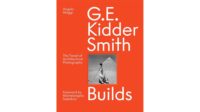After deposing its British-backed monarchy in 1958, postwar, post-colonial Iraq faced an important question in its urban planning: How would it build a modern nation without sacrificing a national identity? The answer came through Rifat Chadirji, the most influential modernist architect you’ve likely never heard of.
Chadirji and his firm, Iraq Consult, is the subject of Every Building in Baghdad, an exhibition on view at Chicago’s Graham Foundation through December 31 that surveys the seldom-discussed Iraqi architect’s tremendous influence in the Middle East. Taking a cue from Ed Ruscha’s 1966 Every Building on the Sunset Strip, the show comprises photographs the architect took and meticulously catalogued himself, courtesy of the Arab Image Foundation.
“Chadirji knew the consequences of borrowing uncritically from what he described as a ‘bland Internationalist modernism,’” says Mark Wasiuta, who originally co-curated the exhibition with Adam Bandler and Florencia Alvarez at Columbia University. Likewise, the London-trained architect also found romanticized notions of vernacular motifs overly simplistic and naive. (The new government had just scrapped Frank Lloyd Wright’s unrealized Edena, an opera house overwrought by his apparent fascination with “Arabian Nights,” Aladdin statue, camel imagery, and all.)
Photographs from early on in Chadirji’s career, while he was employed by the monarchy mandated under British rule, show an initial Bauhaus-like emphasis on straightforward geometries and functions, like his 1955 Abboud Building, Baghdad’s very first high-rise. It comprised a white cylindrical tower punctuated by the Morse code of his dot-and dash-shaped windows, which sat on top of a rectangular base. White walls and right angles reigned in his residential projects, and vernacular features such as archways, screens, and courtyards were applied as practical, functional responses to the environment.
Images of the next decade however reflect his gradual release from this form-follows-function ideology, allowing him to come into his own. A more expressive aesthetic, one that embraces Iraq’s rich sculptural traditions, begins to flourish. The facade of his 1965 Tobacco Building pulses with curved vertical protrusions, an allusion to ancient columns that could be called Brutalist—if not for the brickwork. The projected balconies and vertical panels of his 1966 Federation of Industries building form a rhythmic pattern of arches and points, protrusions and voids.
As an amateur photographer Chadirji also tells a compelling story of secular Iraqi street life—pressed juice vendors, rug merchants, and children running through the streets—all of which add an additional layer to the exhibition’s narrative that makes a strong case for its relevance. By 1970, Chadirji had offices throughout the Middle East (one of which employed a young Zaha Hadid), but the trajectory of his formal experimentation was cut short when he was taken as political prisoner to Abu Ghraib in 1979.
In contrast to the inherent optimism and prosperity of his earlier photos, the final images in the show—shot in the early 1980s—cast a dramatically different mood: freshly released from prison at the behest of Saddam Hussein, who charged Chadirji with overseeing yet another new Baghdad, the architect documented the widespread demolition of buildings, of hijabed women sorting through rubble, and new archways erected in celebration of the Ba’ath party.
These images are in fact the last views Chadirji ever had of the city; now 90 and a resident of London, he left Iraq for MIT in 1983, with dreams of returning to the region once it stabilized. Consequently, his photos do not feature the gaping holes in his Seagram-inflected, 1975 Central Post, Telegraph, and Telephone Administration—voids that were placed there during the American airstrikes of 2003. Thanks to Chadirji’s inward focus and photographic impulse, we can see that building during its structural heyday, but more importantly, Iraq’s cycle of deposition and reconstruction—one that is ongoing—as it plays out in the urban fabric.
Chadirji was charged to build Baghdad under three different political regimes, yet he remains curiously absent from discourse on the modern era. His photographs, here mounted on metal armatures that protrude from the wall at eye-level, command overdue attention.





















